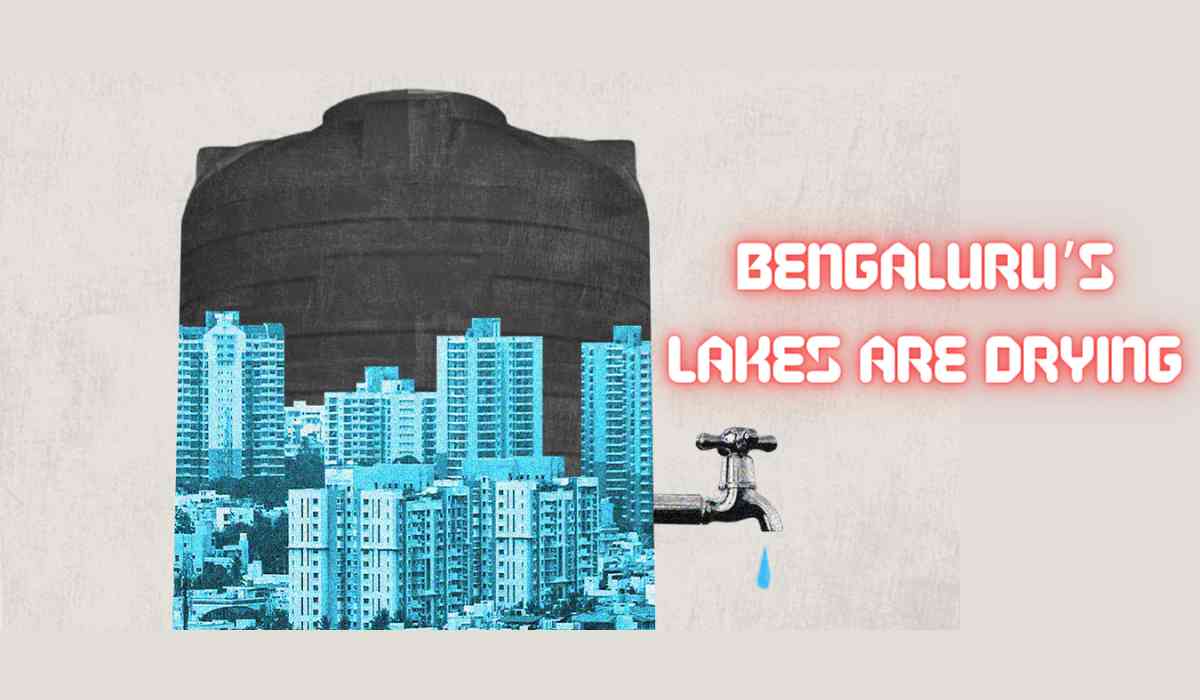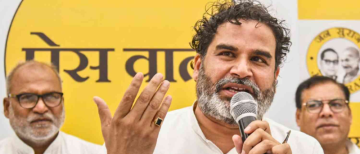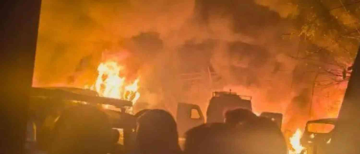In the late 18th century, a British Captain dubbed Bengaluru as "The Land of a Thousand Lakes" while on a mission to find a new route between Madras and Seringapatam. Fast forward to today, and Bengaluru's landscape tells a different story. Urbanization has taken its toll, with only around 400 lakes remaining in the metropolitan area, a mere fraction of the fabled count. Ironically, the very growth that fueled the city's development also led to the demise of its lakes.
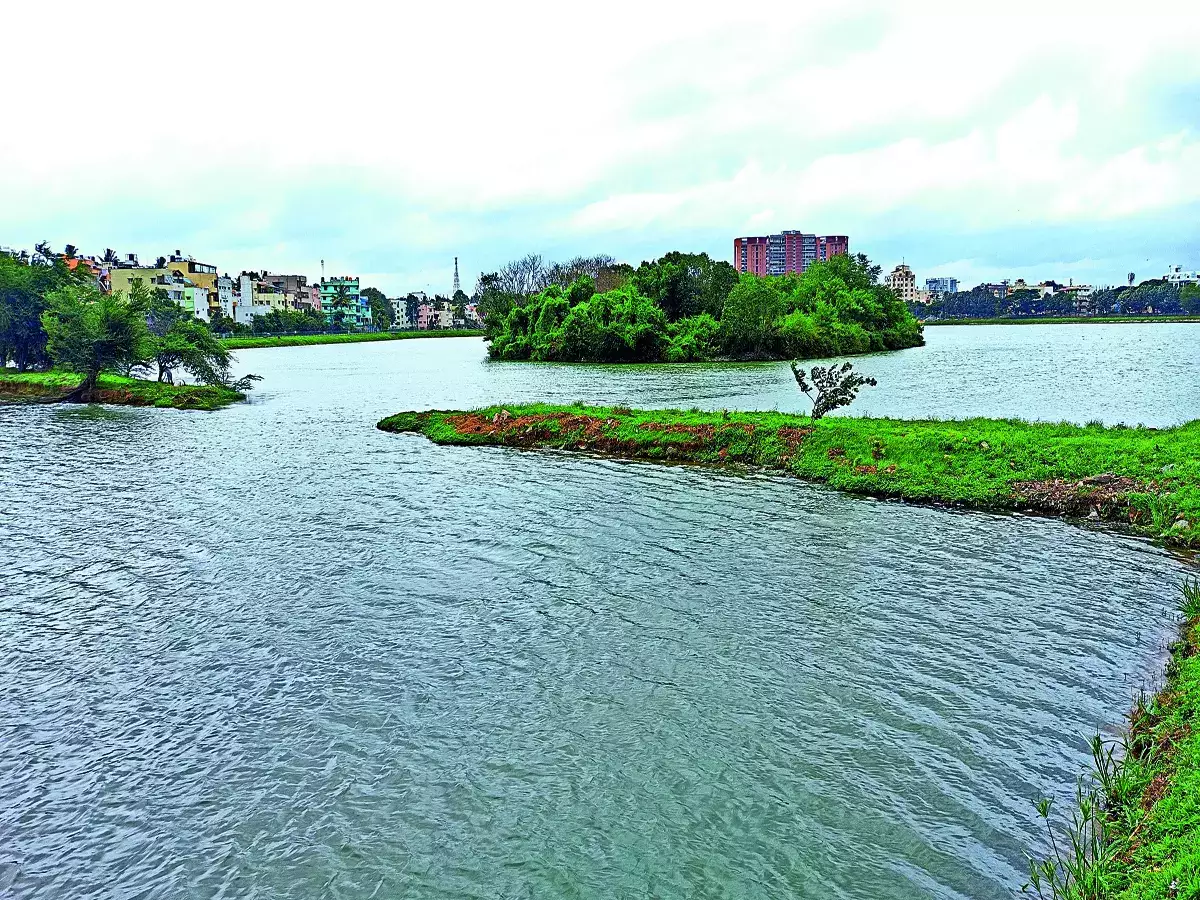
Bengaluru, once celebrated for its abundant water bodies, now grapples with a parched reality. With just 17 "good lakes" left, according to the city's civic body, BBMP, the 'Silicon Valley of India' finds itself in the throes of a severe water crisis. The retreat of monsoons has left the region gasping for relief, facing one of the most significant droughts in decades. As summer intensifies, Bengaluru confronts the harsh truth that its transformation has come at a cost, leaving it vulnerable to the whims of nature.
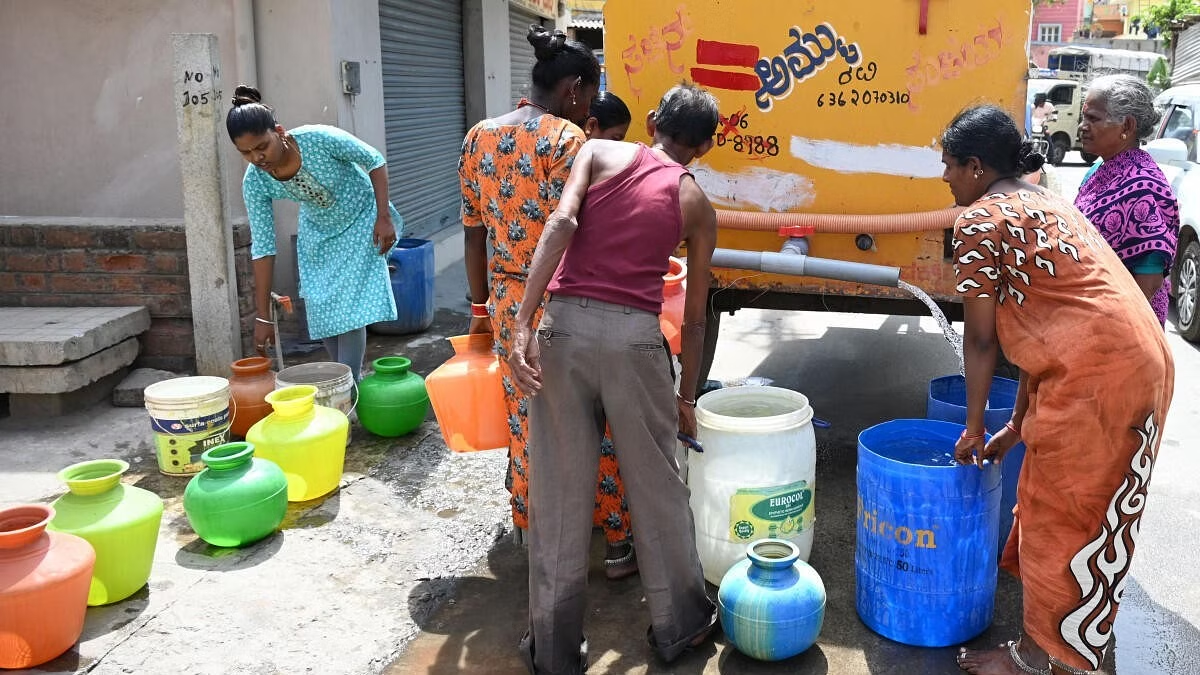
Bengaluru's water woe deepens as lakes vanish amidst scorching heat waves. Among the 800 lakes managed by BBMP and Bengaluru Urban District, a staggering 125 have dried up this year alone. An additional 25 lakes within BBMP's jurisdiction are rapidly dwindling due to the relentless heat. The crisis predominantly affects Bengaluru Urban District, with 100 of its lakes desiccated, while 25 fall within BBMP limits.
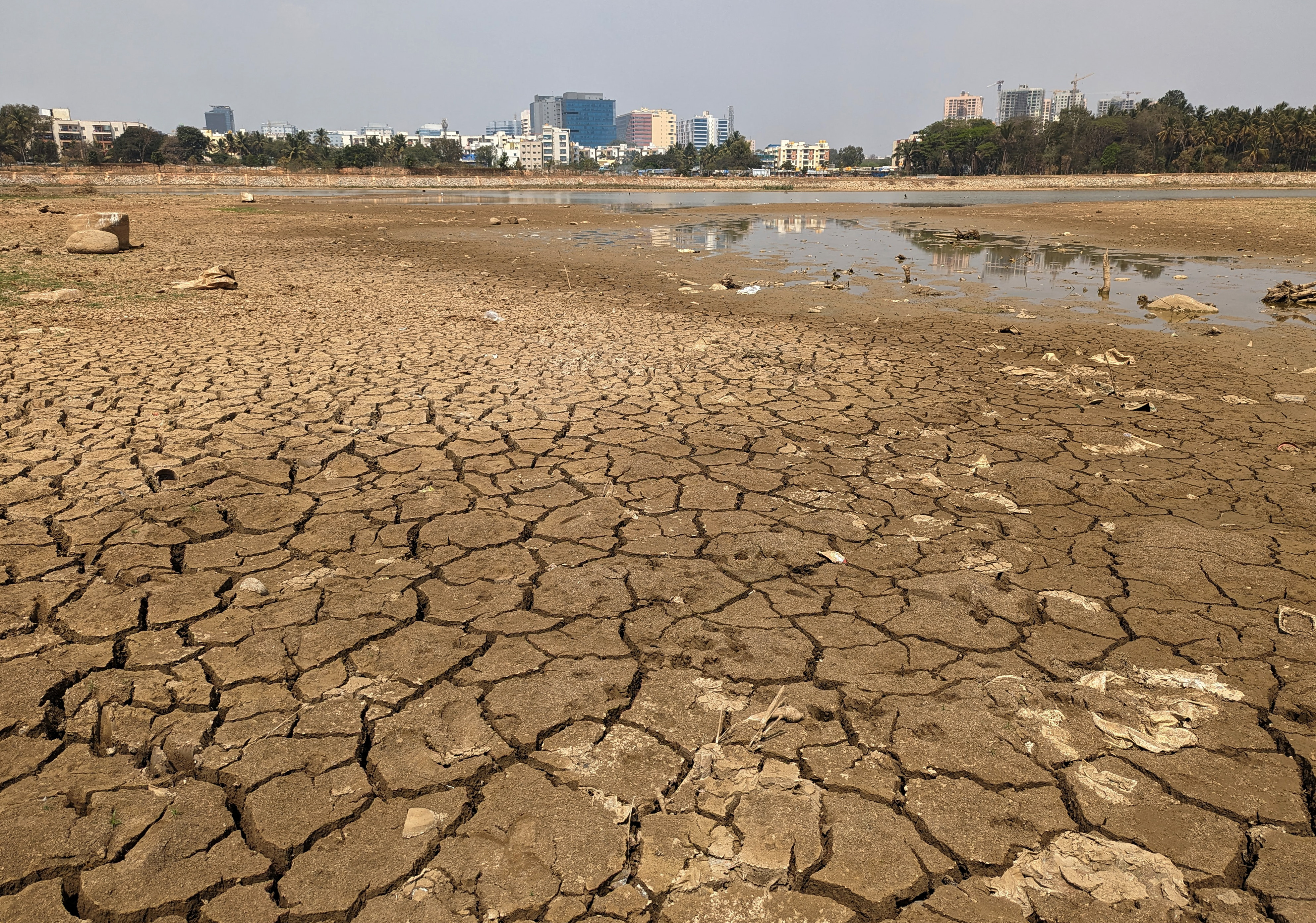
From Lakebeds to Cricket Grounds
In a quirky twist of fate, some of Bengaluru's lakebeds have morphed into cricket pitches, drawing local boys and young enthusiasts to play. The city's civic body, BBMP, oversees 184 lakes, but alarming reports show 50 of them are in dire condition.
Meanwhile, beyond BBMP's jurisdiction, Bengaluru Urban district boasts over 600 lakes, yet nearly 100 have dried up due to the city's water crisis this year. Among the casualties are once-lively lakes like Nallurahalli Lake, near Whitefield, and Vibhutipura Lake, now transformed into makeshift playgrounds.
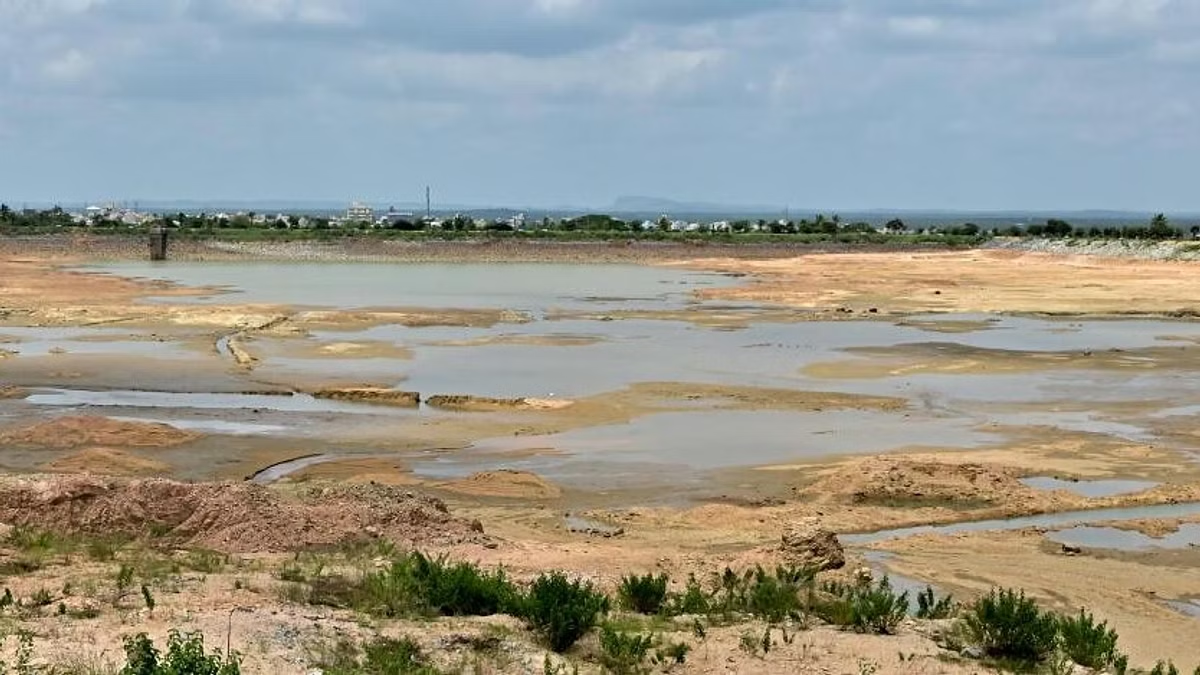
Discover Expert Insights
Experts suggest that the depletion of lakes may disrupt the groundwater levels and impede fishing endeavors. Despite this concern, officials remain optimistic, citing recent rainfall as a potential remedy to revive the parched lakes.
According to a BBMP officer interviewed by TOI, approximately 15 lakes are currently being replenished with treated water by BWSSB in the city. This approach seems indispensable, as relying solely on precipitation to replenish drying lakes appears unsustainable.
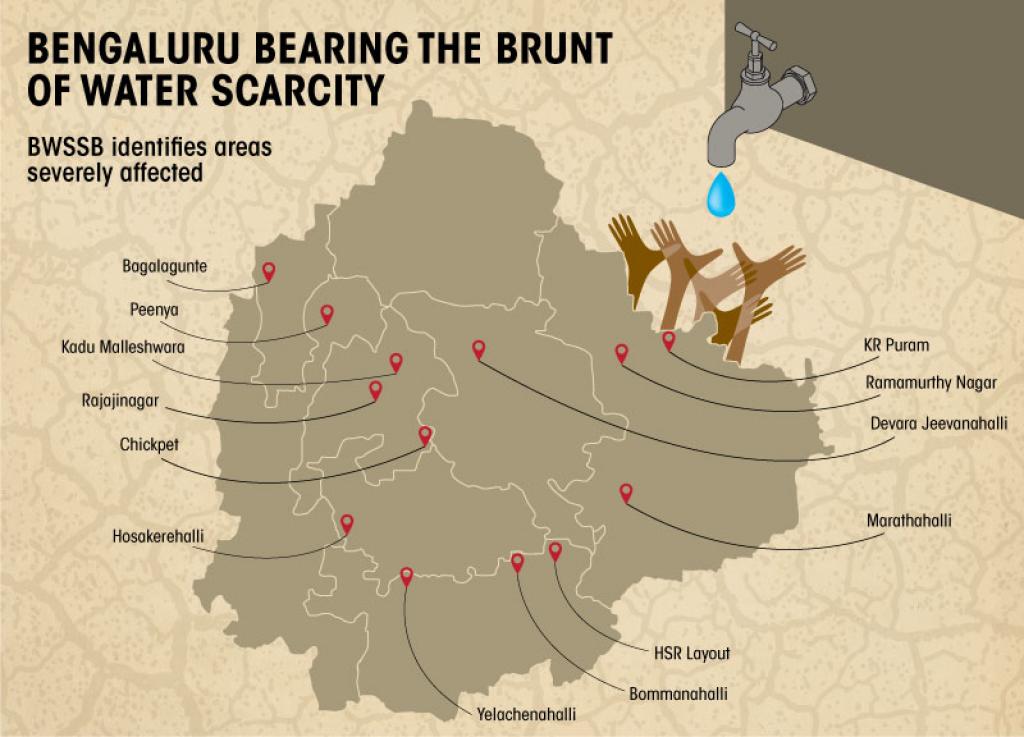
986 Recharge Wells Combatting Bangalore's Water Woes
As the monsoon season approaches, the Bangalore Water Supply and Sewerage Board (BWSSB) has taken proactive steps to tackle the city's water crisis. Over the past month, they've diligently built 986 recharge wells across various locations to replenish dwindling groundwater levels.
According to BWSSB Chairman V Ram Prasath Manohar, the current water scarcity stems from ineffective rainwater harvesting and insufficient infrastructure for groundwater recharge, rather than a lack of water from the Cauvery River.
Manohar emphasized that the depletion of borewells, which catered to millions reliant on groundwater, has exacerbated the situation. By focusing on constructing adequate recharge wells and water tanks, the BWSSB aims not only to replenish groundwater but also to mitigate pollution through strategically placed sluices in different zones. This concerted effort promises relief and sustainability for Bangalore's water supply in the long term.
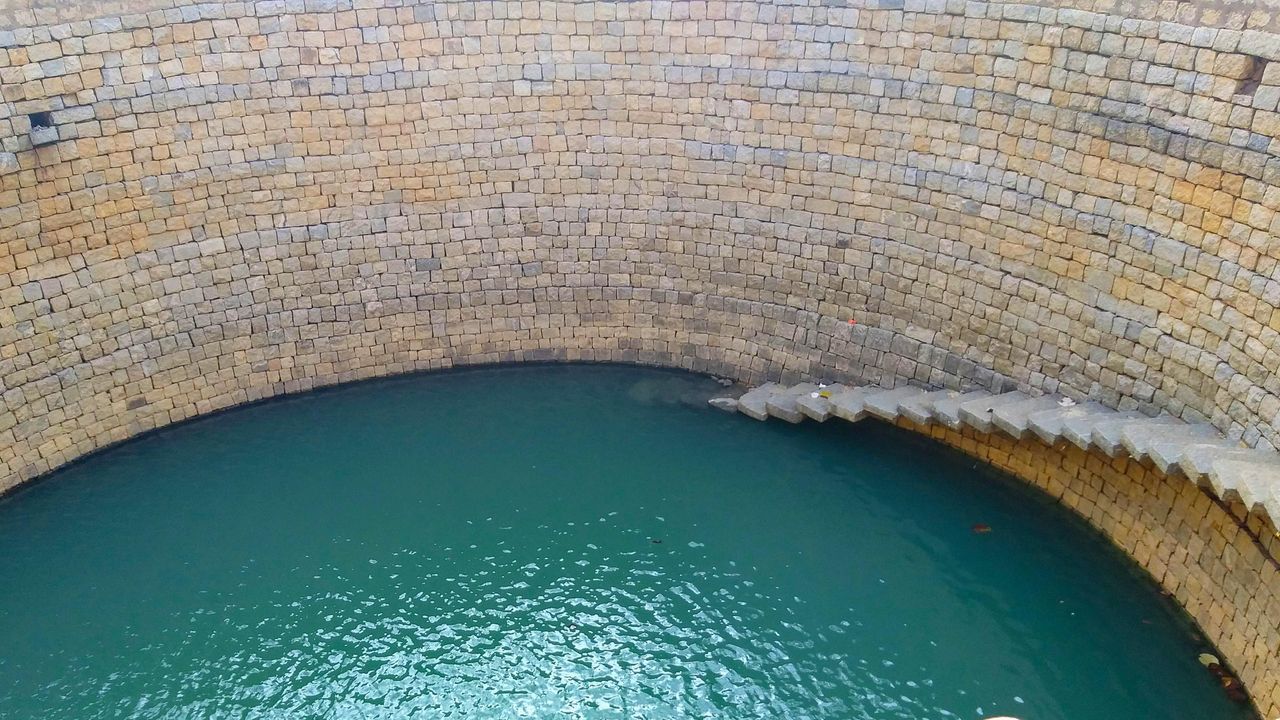
Why Bengaluru needed the lakes?
Bengaluru's lakes weren't just decorative; they served a vital purpose. But why were these lakes essential for the city in Karnataka?
The answer lies in Bengaluru's geographical features. Situated at an elevation of approximately 900 meters (3,000 feet) above sea level and lacking a significant nearby river, Bengaluru historically faced challenges due to its limited rainfall and hilly terrain.
To address this, rulers of the region constructed lakes and freshwater tanks. Even with four smaller rivers—Hebbal, Vrushabhavathi, Koramangala, and Challaghatta—plus their tributaries, the water supply wasn't adequate for the city and its neighboring towns.
Locals even recall Bengaluru being known as 'Kalyananagara,' emphasizing its identity as a city of tanks or 'kalyanis,' highlighting the crucial role of these water bodies in Bengaluru's history.

Who built the lakes in Bengaluru?
The lakes of Bengaluru have a rich history dating back to the 8th Century AD, with the earliest recorded mention being renovation work during the reign of the Western Ganga dynasty.
Bellandur Lake, among the city's largest, also traces its origins to this era. Successive dynasties, including the Cholas, Hoysalas, and Vijayanagara, continued to build lakes and tanks. These water reservoirs served a crucial role in harvesting rainwater and providing sustenance during dry spells.
Archaeological findings from Agara Lake underscore the significance of maintaining these water bodies. Locally known as "Kattes" and "Kuntes," the lakes were typically managed by the community with support from chiefs and monarchs.

'Master Builder' Kempe Gowda and the cascading lakes
Kempe Gowda, often referred to as the "Master Builder," played a pivotal role in shaping Bengaluru's water infrastructure during the 16th century. He orchestrated the creation of a network of a thousand cascading lakes, ingeniously designed to meet the water requirements of the city. These lakes, predominantly man-made, efficiently stored rainwater, serving both domestic and agricultural needs, particularly during the arid summer months.
Acknowledged for his prowess as a builder, Kempe Gowda's endeavors encompassed a wide spectrum of initiatives, ranging from temples to towns. His commitment to his mother's advice, emphasizing the significance of lake construction and afforestation, underscored his dedication to sustainable development.
Furthermore, Kempe Gowda's strategic initiatives extended to enhancing the economic viability of his realm. By expanding agricultural land through the construction of tanks, wells, and canals, he bolstered the financial stability of his burgeoning kingdom.
Among his notable achievements are the construction of Dharmambudi, Hebbal, Kempambudi, and Sampangi lakes. Each lake served a distinct purpose, from honoring familial deities to catering to the water needs of the newly fortified city. Throughout his 46-year reign, Kempe Gowda laid the groundwork for an intricate network of tanks and irrigation wells, ensuring the prosperity and resilience of Bengaluru's water supply.
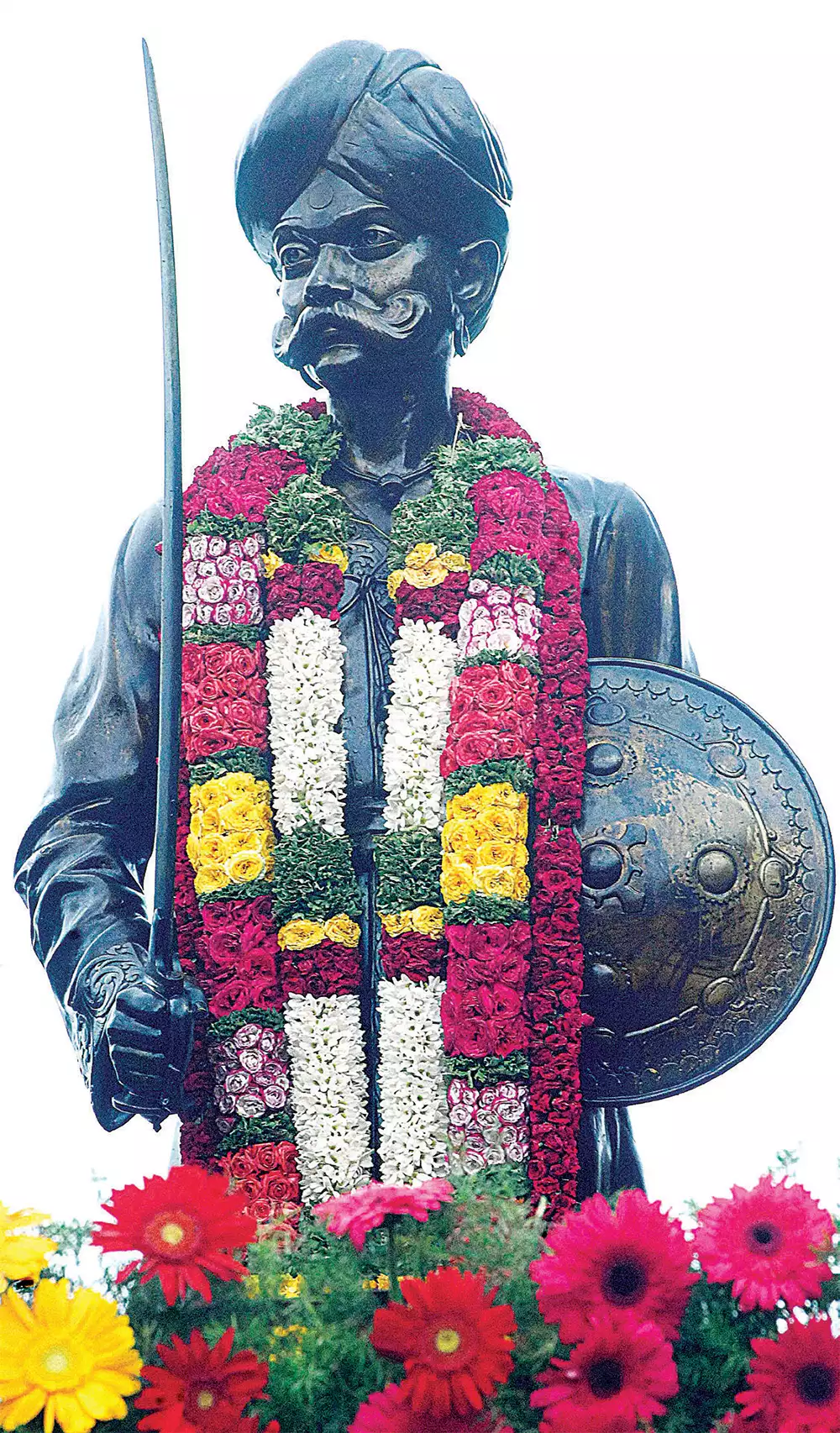
How did the cascading lakes work?
The cascading lakes, engineered by Kempe Gowda, ingeniously linked water bodies to prevent any water wastage. Rainwater collected from higher lakes flowed into lower ones through canals called 'rajakaluwes'.
This process continued, with each lake feeding into the next until water eventually discharged into natural drainage valleys. This interconnected system not only conserved rainwater but also replenished groundwater, supported agriculture, and sustained livelihoods for generations in Bengaluru.
The lakes were crucial for the city's pleasant climate and survival, recognized by rulers from the Vijayanagara dynasty to the British. Despite historical changes, the importance of water supply remained paramount.
Reservoirs like Ulsoor Tank, Miller's Tank, and Hesarghatta Lake, built in the 19th century, stand as testaments to Bengaluru's water management legacy, although some, like Ulsoor Lake, have suffered from neglect in recent decades.
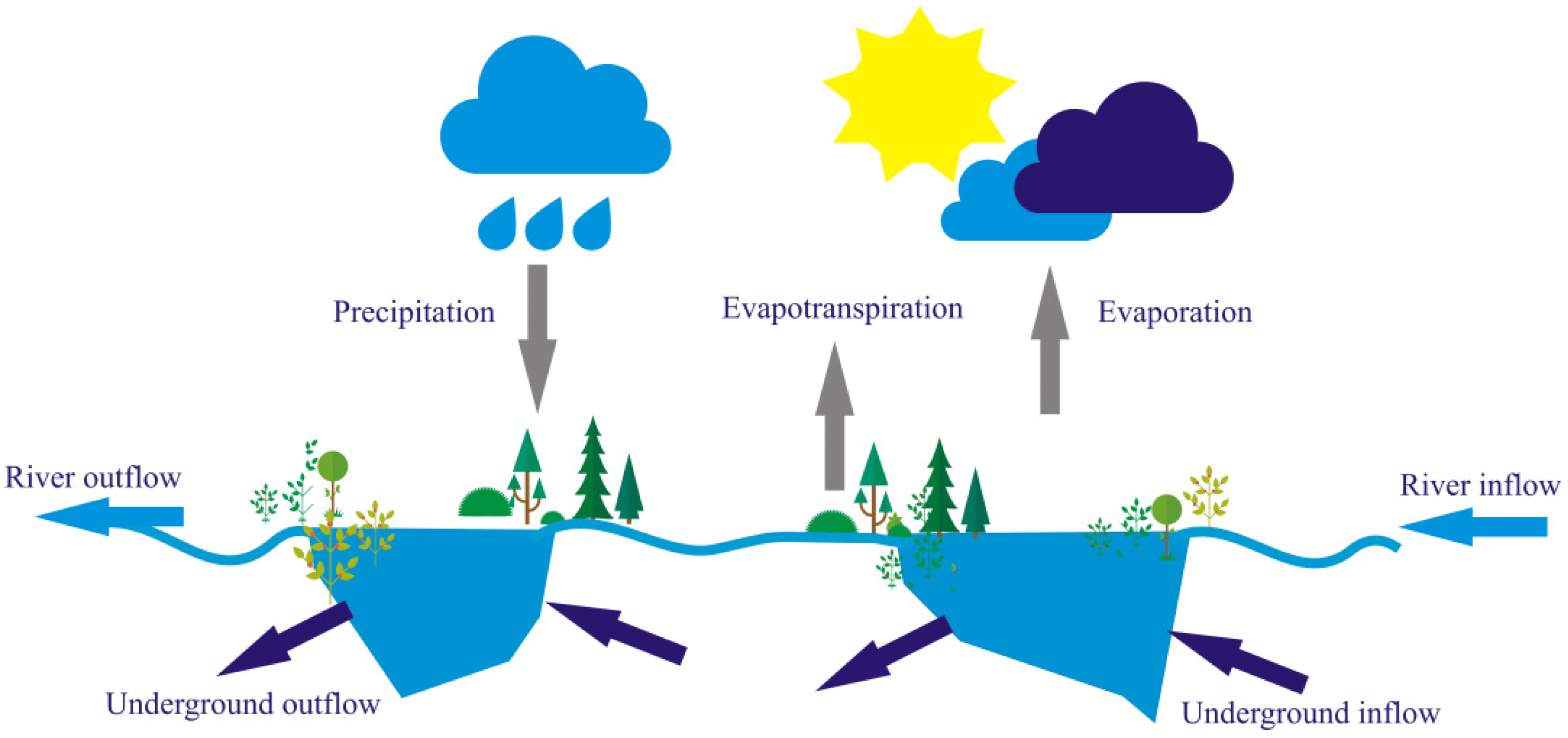
How Bengaluru killed its cascading lakes?
Once teeming with life, Bengaluru's lakes now bear the scars of rapid urbanization and population explosion. The rush to claim the title of 'Silicon Valley of India' led to rampant encroachment and pollution, choking these vital waterways.
Unchecked growth saw the conversion of open spaces into commercial and residential areas, alongside the felling of trees. H. S. Sudhira and Harini Nagendra's 2013 study highlights this dark side of Bengaluru's economic boom.
Today, the disappearance of lakes is an undeniable reality, a consequence of the city's exponential growth. Neglecting these once-thriving water bodies has worsened Bengaluru's water situation, a sobering reminder of the cost of urbanization.

Why does Bangalore face water scarcity?
-
Limited Water Utility Services: Despite efforts, the Bangalore Water Supply and Sewerage Board (BWSSB) hasn't extended its water pipeline network to outer zones like Bellandur, Singasandra, and others. These areas heavily rely on tanker water supply.
-
Government Water Schemes: While successive governments pledge to address the water crisis, many proposed drinking water and sanitation schemes remain unimplemented.
-
Rainwater Dependency: Bangalore's key water reservoirs like Krishnaraj Sagar (KRS) and Kabini are at only 20% of their capacity. This leaves the city with just enough water for one season, highlighting its high reliance on rainwater.
-
Encroachment on Water Bodies: Urbanization in Bangalore often comes at the expense of its natural water bodies, eroding the city's scenic beauty and ecological balance.
-
Groundwater Overuse: With dwindling natural water sources, groundwater becomes the primary water supply for many, leading to overuse and insufficient recycling, contributing to wastage.
-
Depleting Borewell Levels: Borewells now need to be dug deeper, up to 800-900 feet, compared to the shallower depths of 150-200 feet in the past, indicating a significant decline in groundwater levels.
-
Issues with Tanker Water Supply: In the absence of government water utilities, tanker water supply becomes the norm, plagued by issues like unregulated sourcing, poor sanitization, and erratic pricing.
-
Impact of Climate Change: Bangalore faces the repercussions of climate change, with failed monsoons exacerbating the water crisis. The city's reliance on rainwater is strained as groundwater reserves dwindle, emphasizing the urgent need for sustainable solutions.
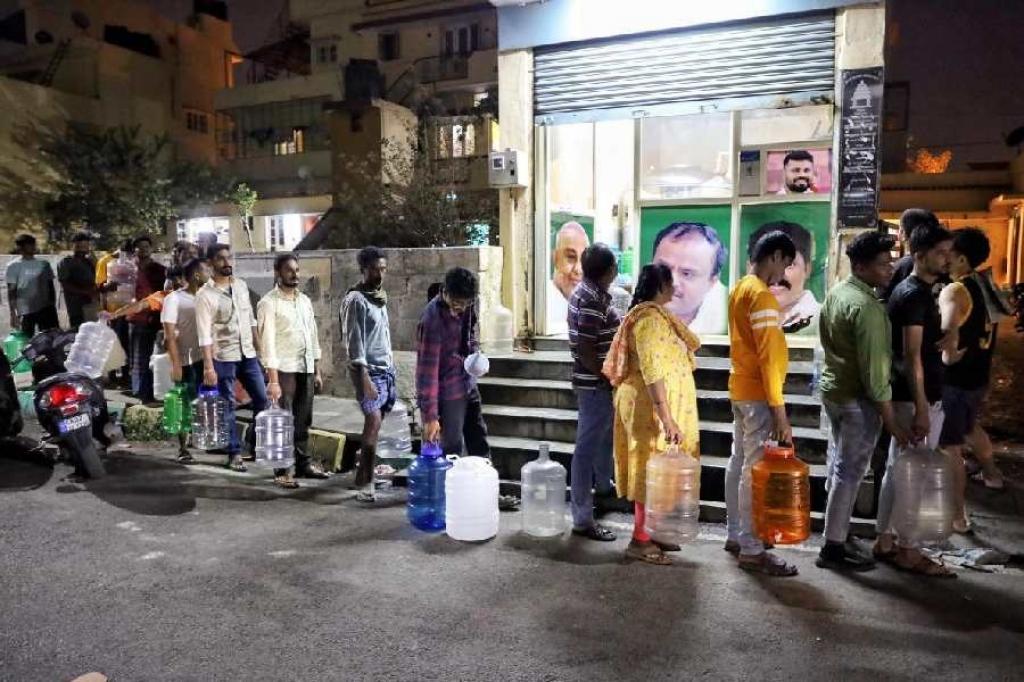
What can be done?
Initiatives to Reduce Water Wastage and Promote Groundwater Recharge:
-
Transition to Micro-Irrigation:
- Shift from flood irrigation to drip irrigation to enhance efficiency.
- Drip irrigation can achieve up to 95% efficiency compared to 40% with flood irrigation.
- This shift not only conserves water but also preserves soil nutrients.
-
Sewage Water Reuse:
- Encourage societies to utilize sewage treatment plants effectively.
- Recycling sewage water for flushing toilets can save significant amounts of water.
- Each household can save up to 4500 litres of water annually through sewage water reuse.
- Repurposing treated sewage water for outdoor washing and gardening further maximizes its utility.
-
Utilization of Treated Sewage Water in Tanks and Lakes:
- Halt the encroachment of lakes and tanks for urban development.
- Reclaim and desilt existing water bodies to restore their functionality.
- Redirect rainwater into lakes and supplement them with treated sewage water for sustainable replenishment.
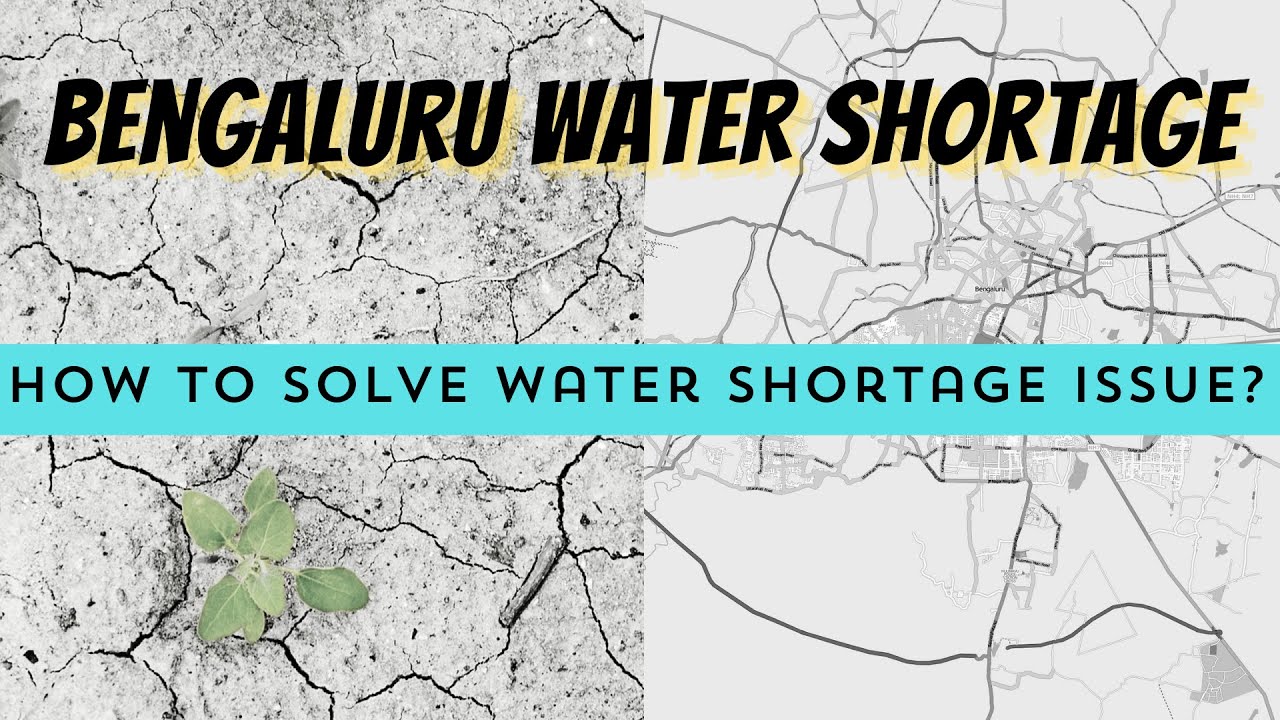
Manage household water wastage
Did you know that a single drop of water can be utilized up to five times? It's indeed a fact worth noting. Amidst the efforts of societies and governments in establishing water utility facilities to address scarcity, individual actions play a crucial role. Our efforts in water conservation resonate on a personal level as much as they do socially. Here are some practical tips for managing household water usage effectively:
-
Capture shower water: Placing a bucket in the shower while waiting for warm water from the geyser can save significant amounts of water that would otherwise go down the drain. Additionally, using a bucket during showering can collect water for flushing toilets or cleaning the bathroom.
-
Turn off the tap when brushing: Many of us habitually leave the tap running while brushing our teeth. Simply turning off the tap when not in use can save considerable amounts of water. Using a cup for rinsing can further reduce water consumption.
-
Utilize leftover water: Instead of discarding half-empty drinking bottles, consider repurposing the remaining water, especially when traveling or at home. This water can be used for watering indoor plants, reducing waste.
-
Reuse water from purifiers: The water used to wash grains, fruits, and vegetables in purifiers often goes to waste. Collecting and repurposing this water for watering plants or cleaning purposes can contribute to conservation efforts.
-
Address leaks promptly: A leaking faucet can waste over 500 litres of water while awaiting repair. It's crucial to address leaks promptly to prevent unnecessary water loss.
As responsible citizens, it's incumbent upon us to safeguard this essential natural resource. While we make individual efforts towards conservation, collective actions across communities and societies are vital for ensuring sustainable water management.
With inputs from agencies
Image Source: Multiple agencies
© Copyright 2024. All Rights Reserved Powered by Vygr Media.

